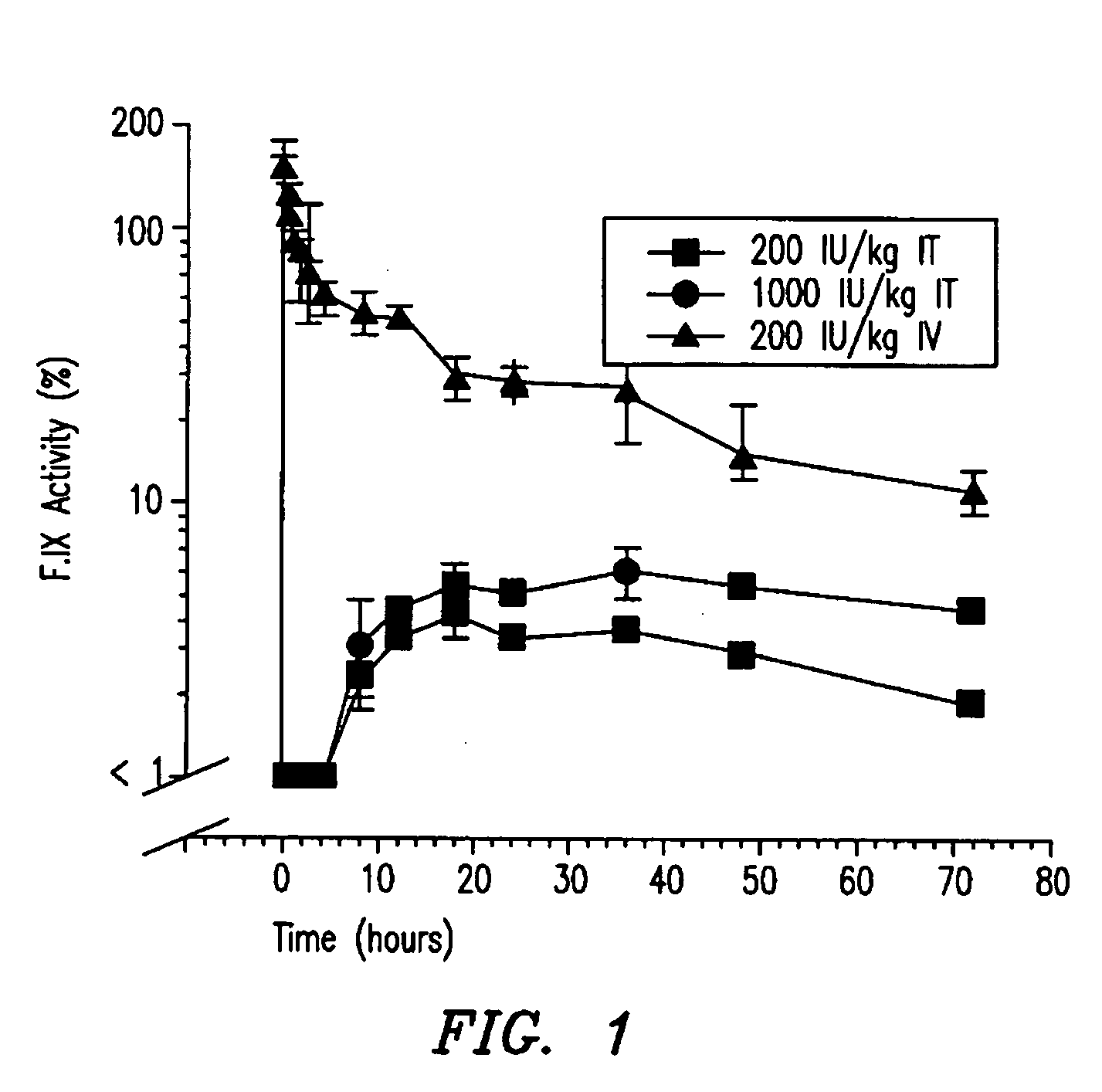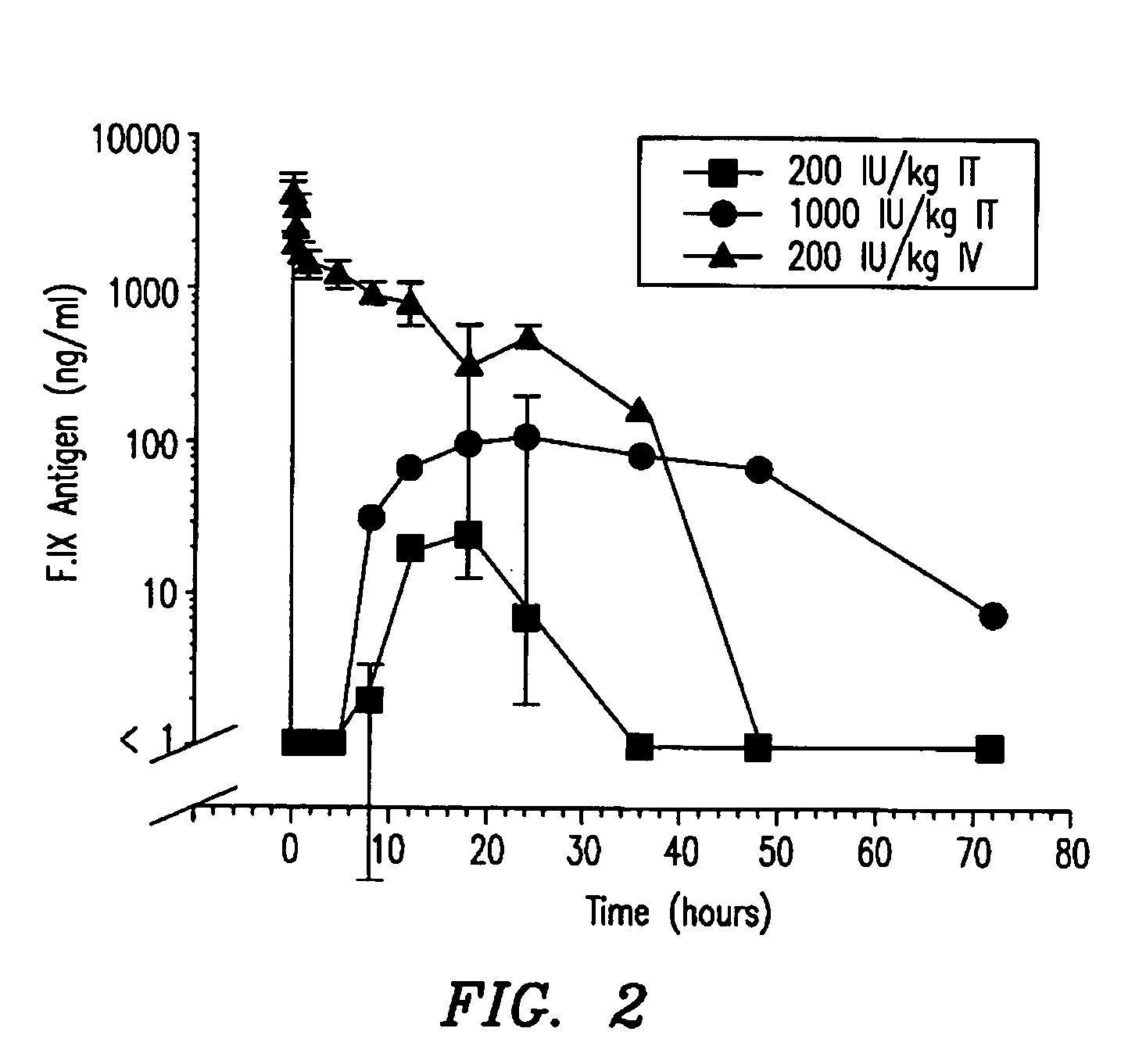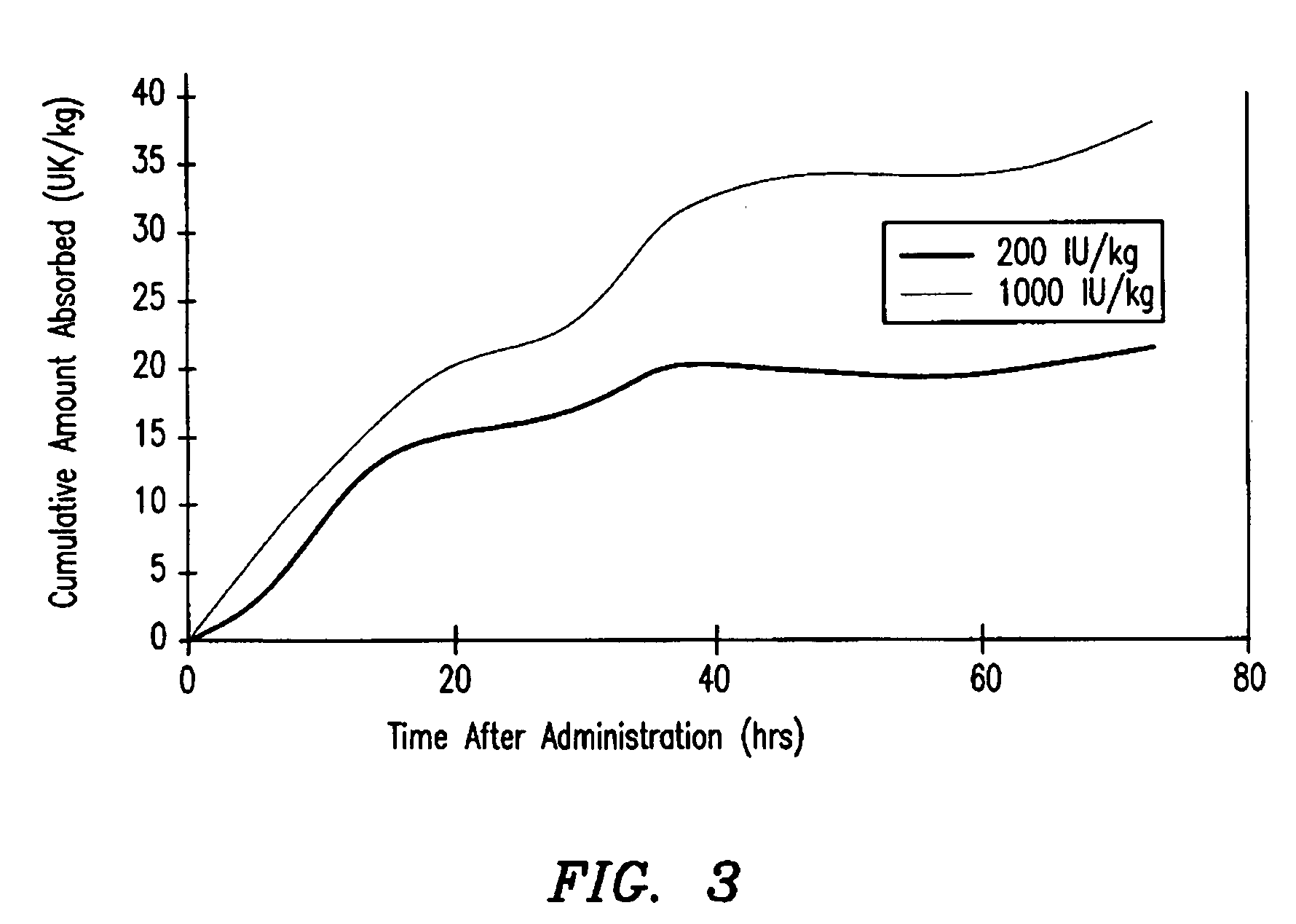Hemophilia treatment by inhalation of coagulation factors
a technology of coagulation factor and hemophilia, which is applied in the direction of aerosol delivery, extracellular fluid disorder, pharmaceutical product form change, etc., can solve the problems of internal hemorrhaging, intense pain, and the person with hemophilia suffers throughout their li
- Summary
- Abstract
- Description
- Claims
- Application Information
AI Technical Summary
Benefits of technology
Problems solved by technology
Method used
Image
Examples
example 1
Treatment of Hemophila via Intratracheal Administration of Liquid Factor IX
[0041] For proof of concept, we deposited liquid human recombinant Factor IX (rF.IX) intratracheally (IT) in a hemophilia B dog model. If the liquid IT rF.IX demonstrated bioavailability, then we would proceed further and test an aersolized dry powder form of the protein in the same model system.
[0042] Hemophilia B dogs: Hemophilia B dogs from the closed colony at the Francis Owen Blood Research Laboratory at the University of North Carolina in Chapel Hill were used in this study. The causative molecular defect in these dogs is a missense point mutation (G to A at nucleotide 1477) in the catalytic domain of the Factor IX molecule, resulting in a complete absence of circulating F.IX (6). This strain of hemophilia B dogs has neither detectable F.IX activity in functional assays nor antigen by ELISA or immunoblot (7, 8). All animals were treated according to standards in the Guide for the Care and Use of Labor...
example 2
Aerosolization of Factor IX
[0059] Because the tracheal administration of liquid rF.IX proved safe and efficacious, we next attempted to aerosolize rF.IX. Recombinant human Factor IX is a glycoprotein that is 47 kD when unglycosylated and 55 kD when glycosylated. The current pharmaceutical formulation is a lyophilized powder because liquid F.IX tends to be unstable. Even the powder formulation is susceptible to oxidation and degradation when exposed to ambient levels of humidity. Therefore, we chose to use a dry powder aerosolized formulation, in an attempt to minimize the expected instability.
[0060] The target aerosol properties for the rF.IX powders were an initial Emitted Dose (ED) value greater than 50%, a Mass Median Aerodynamic Diameter (MMAD) less than 3.5 um and a Fine Particle Fraction (FPF3.3μm) of greater than 0.50. Chemically and physically stable powders were classified as having less than 5% loss of purity with respect to the initial spray dry solution characteristics...
example 3
In Vivo Bioavailability Study
[0088] The first two studies showed 1) that efficacious levels of liquid rF.IX could be systemically delivered via the intratracheal surfaces, and 2) that dry powder rF.IX could be successfully aerosolized, while maintaining enzymatic activity and stability. The next experiment employed Formulation 6 (tri-leucine excipient) in an in vivo dog model to test for bioavailability of the rF.IX.
[0089] The objectives of this study were to determine the pharmacodynamic and pharmacokinetic parameters of human Factor IX after oral inhalation in hemophilia B dogs that had been previously tolerized to human Factor IX. The data from this study is compared against data from a subsequent study administering human Factor IX by intravenous injection. Parameters that were measured included 1) whole blood clotting time (WBCT), 2) F.IX antigen (F.IX:Ag), 3) activated partial thromboplastin time (APTT), 4) F.IX activity, 5) F.IX antibodies by ELISA, and 6) the Bethesda inhi...
PUM
| Property | Measurement | Unit |
|---|---|---|
| Length | aaaaa | aaaaa |
| Length | aaaaa | aaaaa |
| Length | aaaaa | aaaaa |
Abstract
Description
Claims
Application Information
 Login to View More
Login to View More - R&D
- Intellectual Property
- Life Sciences
- Materials
- Tech Scout
- Unparalleled Data Quality
- Higher Quality Content
- 60% Fewer Hallucinations
Browse by: Latest US Patents, China's latest patents, Technical Efficacy Thesaurus, Application Domain, Technology Topic, Popular Technical Reports.
© 2025 PatSnap. All rights reserved.Legal|Privacy policy|Modern Slavery Act Transparency Statement|Sitemap|About US| Contact US: help@patsnap.com



